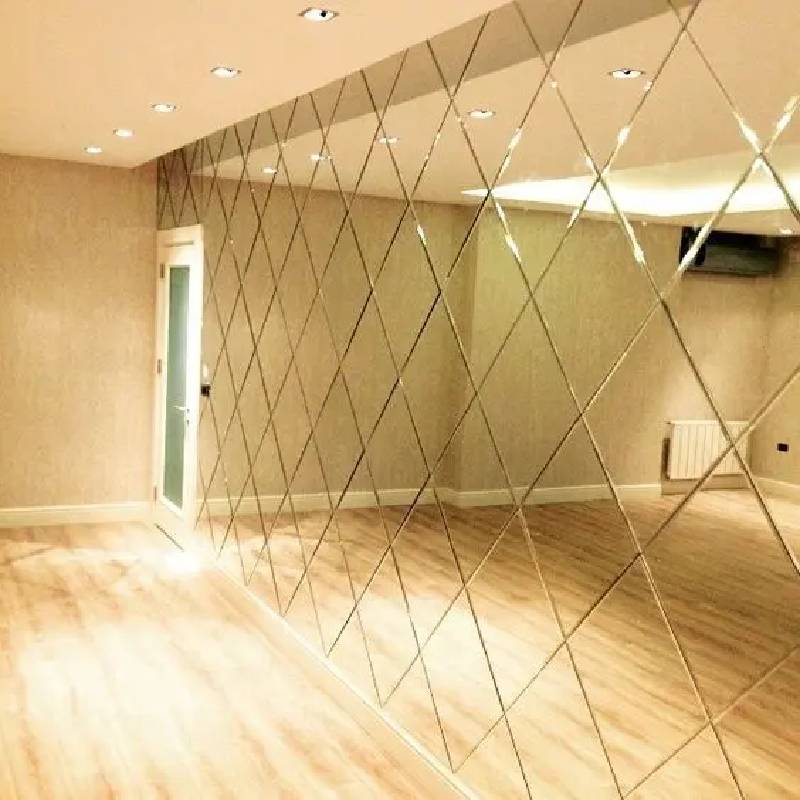The Reflective Properties of Aluminum Mirrors
Aluminum mirrors are widely recognized for their impressive reflectivity and versatility in various applications. The reflectivity of aluminum is primarily attributed to its unique physical and chemical properties, making it a favored choice for optical components in industries ranging from telecommunications to astronomy.
One of the prominent features of aluminum is its capability to reflect a significant portion of visible light. In fact, a freshly polished aluminum surface can reflect up to 90-95% of visible light, depending on the specific wavelength. This high reflectivity allows aluminum mirrors to efficiently direct light in systems like telescopes, microscopes, and lighting fixtures. By harnessing the reflective potential of aluminum, manufacturers can create optical surfaces that enhance brightness and clarity in visual applications.
The Reflective Properties of Aluminum Mirrors
The durability of aluminum mirrors is another compelling factor. Aluminum is inherently resistant to corrosion, and when coated properly, it can maintain its reflective properties even in harsh environmental conditions. Anodization, for example, creates a protective oxide layer on the surface of the aluminum, which enhances its durability and resistance to scratches and oxidation. This feature is particularly valuable in outdoor applications, where mirrors may be exposed to moisture, pollutants, and other environmental stressors.
aluminum mirror reflectivity
In manufacturing processes, aluminum mirrors can also be engineered to meet specific requirements. They can be coated with different materials to modify their reflective properties or tailored to shape and size for particular applications. This versatility leads to innovations in design and functionality, enabling the creation of custom optical systems tailored to an array of scientific and industrial needs.
However, the effectiveness of aluminum mirrors is influenced by factors such as surface quality and the presence of contaminants. Polishing techniques play a crucial role in achieving the desired reflective qualities. A well-polished aluminum surface not only maximizes reflectivity but also minimizes scattering of light, ensuring that the intended optical performance is realized.
As technology advances, the demand for high-performance optical components continues to grow. Aluminum mirrors stand out due to their impressive reflectivity, durability, and versatility. They are widely used in applications that require precise light manipulation, such as lasers, optical sensors, and imaging systems. The continued development and refinement of aluminum mirror technology promise exciting possibilities for future innovations.
In conclusion, aluminum mirrors are a testament to the intersection of materials science and optical engineering. Their high reflectivity, resistance to environmental challenges, and adaptability make them indispensable in modern optical applications. As we explore new frontiers in technology, the role of aluminum mirrors will likely expand, illuminating the path for further advancements in the field of optics.
 Afrikaans
Afrikaans  Albanian
Albanian  Amharic
Amharic  Arabic
Arabic  Armenian
Armenian  Azerbaijani
Azerbaijani  Basque
Basque  Belarusian
Belarusian  Bengali
Bengali  Bosnian
Bosnian  Bulgarian
Bulgarian  Catalan
Catalan  Cebuano
Cebuano  Corsican
Corsican  Croatian
Croatian  Czech
Czech  Danish
Danish  Dutch
Dutch  English
English  Esperanto
Esperanto  Estonian
Estonian  Finnish
Finnish  French
French  Frisian
Frisian  Galician
Galician  Georgian
Georgian  German
German  Greek
Greek  Gujarati
Gujarati  Haitian Creole
Haitian Creole  hausa
hausa  hawaiian
hawaiian  Hebrew
Hebrew  Hindi
Hindi  Miao
Miao  Hungarian
Hungarian  Icelandic
Icelandic  igbo
igbo  Indonesian
Indonesian  irish
irish  Italian
Italian  Japanese
Japanese  Javanese
Javanese  Kannada
Kannada  kazakh
kazakh  Khmer
Khmer  Rwandese
Rwandese  Korean
Korean  Kurdish
Kurdish  Kyrgyz
Kyrgyz  Lao
Lao  Latin
Latin  Latvian
Latvian  Lithuanian
Lithuanian  Luxembourgish
Luxembourgish  Macedonian
Macedonian  Malgashi
Malgashi  Malay
Malay  Malayalam
Malayalam  Maltese
Maltese  Maori
Maori  Marathi
Marathi  Mongolian
Mongolian  Myanmar
Myanmar  Nepali
Nepali  Norwegian
Norwegian  Norwegian
Norwegian  Occitan
Occitan  Pashto
Pashto  Persian
Persian  Polish
Polish  Portuguese
Portuguese  Punjabi
Punjabi  Romanian
Romanian  Russian
Russian  Samoan
Samoan  Scottish Gaelic
Scottish Gaelic  Serbian
Serbian  Sesotho
Sesotho  Shona
Shona  Sindhi
Sindhi  Sinhala
Sinhala  Slovak
Slovak  Slovenian
Slovenian  Somali
Somali  Spanish
Spanish  Sundanese
Sundanese  Swahili
Swahili  Swedish
Swedish  Tagalog
Tagalog  Tajik
Tajik  Tamil
Tamil  Tatar
Tatar  Telugu
Telugu  Thai
Thai  Turkish
Turkish  Turkmen
Turkmen  Ukrainian
Ukrainian  Urdu
Urdu  Uighur
Uighur  Uzbek
Uzbek  Vietnamese
Vietnamese  Welsh
Welsh  Bantu
Bantu  Yiddish
Yiddish  Yoruba
Yoruba  Zulu
Zulu 

